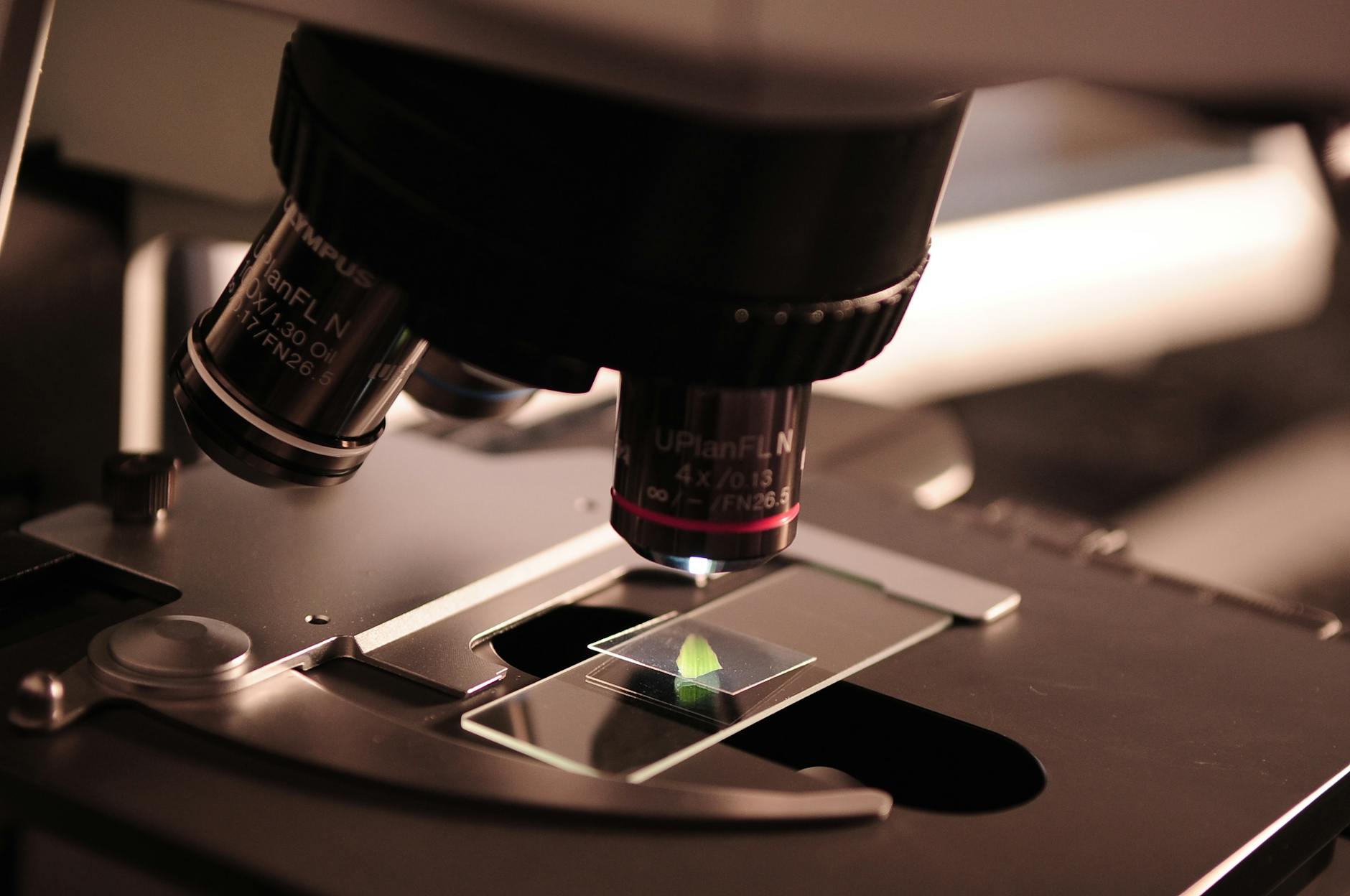The Invisible World Revealed
How Dust Particles Bend Light and Distort Sound
Article Navigation
The Hidden Symphony of the Microscopic World
Imagine trying to listen to a symphony orchestra through a keyhole—the melodies distort, instruments blur together, and subtle nuances vanish. This is precisely the challenge scientists face when studying individual particles smaller than the wavelength of light.

When light meets matter at this scale, physics performs an extraordinary dance: vibrations within materials (phonons) interact with photons, creating distorted spectral "lineshapes" that obscure crucial chemical information.
For environmental scientists, these tiny particles—atmospheric dust, pollutants, or even interstellar cosmic dust—hold secrets about our planet's health and human disease risks. Yet until recently, their chemical identities remained veiled by physical phenomena that twist their infrared signatures into unrecognizable shapes. The breakthrough came when physicists turned the problem on its head, using light itself to trap light and reveal the invisible 1 3 .
Key Concepts: When Light and Matter Tango
Wavelength-Scale Particles: The Problem Children of Spectroscopy
Particles ranging from 0.5–10 micrometers exist in a physics "twilight zone"—larger than individual molecules but smaller than light's wavelength. When infrared light hits them, instead of clean absorption, we get:
- Scattering: Light deflects unpredictably
- Resonance distortion: Phonon vibrations (atomic "sound waves") couple with photons
- Mie theory breakdown: Standard light-scattering models fail catastrophically
| Phenomenon | Effect on Spectrum | Scientific Consequence |
|---|---|---|
| Resonance broadening | Peaks widen by 20–50% | Masks chemical bond identities |
| Fano distortions | Asymmetric peak shapes | Misinterpretation of molecular structures |
| Phonon-photon coupling | New "polariton" peaks appear | Creates ghost signals unlinked to chemistry |
| Mie scattering | Background signal swamps data | Loss of molecular fingerprint region |
Plasmonics: Nature's Light Amplifier
The solution emerged from plasmonics—the study of how electrons dance on metal surfaces. When light strikes nanoscale metal structures, it generates surface plasmons: collective electron oscillations that concentrate light into spaces far smaller than its wavelength. As physicist James Coe demonstrated, a metal mesh pierced with microscopic holes transforms into a spectral "keyhole decoder." Dust particles placed in these holes experience up to 100,000× amplified light fields, overpowering scattering effects and revealing pristine absorption spectra 4 .
Experiment Deep Dive: Catching Dust in a Light Trap
Methodology: The Art of Spectral Whispering
In their landmark 2013 study, Ravi, Coe, and team deployed a plasmonic "antenna" to eavesdrop on dust particles:
- The Plasmonic Cage: Fabricated a gold-coated nickel mesh with 5 μm holes—each hole acting as a light-concentrating trap 3 .
- Particle Capture: Airborne dust particles (PM2.5) were deposited onto the mesh via electrostatic precipitation.
- Infrared Interrogation: Shone synchrotron IR light through individual holes containing single particles.
- Distortion Correction: Compared spectra from holes with/without particles to computationally remove plasmonic artifacts 1 .

Results: Ghost Peaks Exorcised
The team achieved the impossible: clean vibrational spectra of individual silica and carbonate particles. Key breakthroughs:
- Identified Fano lineshapes in phonon peaks—asymmetric distortions proving photon-phonon coupling
- Recovered hidden OH signatures in mineral dust, critical for toxicity studies
- Enabled particle mixing analysis: Detected sulfate coatings on carbon cores, explaining atmospheric reactivity
| Particle Type | Distorted Peak (cmâ»Â¹) | Corrected Peak (cmâ»Â¹) | Chemical Assignment |
|---|---|---|---|
| Quartz (SiOâ‚‚) | 1120 (broad shoulder) | 1080 (sharp) | Si-O stretch |
| Calcite (CaCO₃) | 1420 → 880 (merged) | 1420 + 880 (separate) | CO₃²⻠asymmetric vs symmetric stretch |
| Clay minerals | 3695 (vanishing) | 3695 (intense) | Surface OH groups |
The Scientist's Toolkit: Decoding Spectral Mysteries
| Tool | Function | Innovation |
|---|---|---|
| Plasmonic mesh | Nano-engineered metal films with micro-holes | Amplifies light fields 10âµÃ—, traps particles |
| Synchrotron IR source | Particle accelerator-derived infrared beam | 100× brighter than lab sources, beats noise |
| FTIR microscope | Fourier-transform infrared spectrometer | Maps chemical composition at micron scale |
| Dust spectral library | Database of plasmon-enhanced particle spectra | Enables machine learning identification |
| Mie-DDA modeling | Discrete dipole approximation software | Simulates light-scattering in complex shapes |

Plasmonic Mesh
Nano-engineered metal films that amplify light fields by 100,000× to trap and analyze individual particles.

Synchrotron IR
Particle accelerator-derived infrared beam that's 100× brighter than conventional lab sources.

FTIR Microscope
Advanced spectrometer that maps chemical composition at micron scale resolution.
Beyond the Lab: Why Distorted Lineshapes Matter
Environmental Health: Reading Dust's Diary
Each particle's spectral fingerprint reveals its origin and toxicity:
- Silicate peaks → Wind-blown desert dust (linked to lung fibrosis)
- Carbonate signatures → Construction debris (aggravates asthma)
- Sulfate coatings → Industrial pollution (acidic, triggers inflammation)
By decoding these signatures, researchers built the first "Dust Library"—a spectral archive correlating particle chemistry with health impacts. This proved crucial during the 2018 California wildfires, where spectral analysis identified carcinogenic PAHs adsorbed onto soot particles 4 .
Cosmic Clues: Interstellar Dust Forensics
The same techniques now probe extraterrestrial dust:
- NASA uses plasmonic meshes to analyze cometary particles from Stardust missions
- Distorted phonon peaks in interstellar ice reveal organic precursors to life

Conclusion: Turning Distortion into Discovery
The challenge of distorted spectral lineshapes—once a physicist's nightmare—has birthed a revolution. Like restoring a scratchy vinyl recording to studio quality, plasmonic decoding lets us hear the true "symphony" of atomic vibrations. From predicting desertification patterns to detecting early-stage cancer in biopsied tissues (Coe's current medical work), this science transforms how we read light's secret language.
As Ravi and Coe's team revealed, even the most confounding distortions obey elegant physical laws. By bending light to our will, we've turned spectral ghosts into chemical messengers—proving that sometimes, to see clearly, we must first trap the light.
"What was noise becomes signal. What was distortion tells the deeper story."